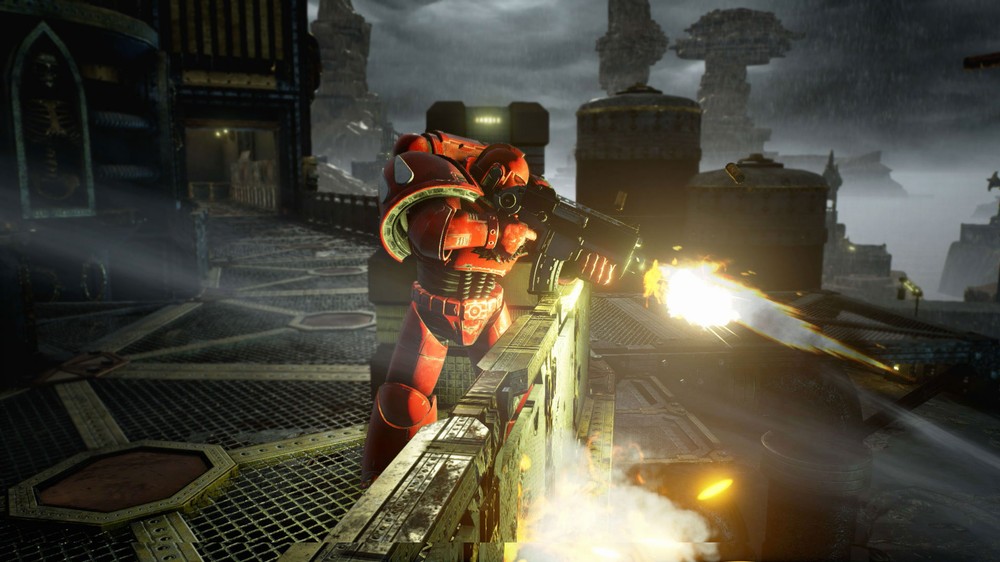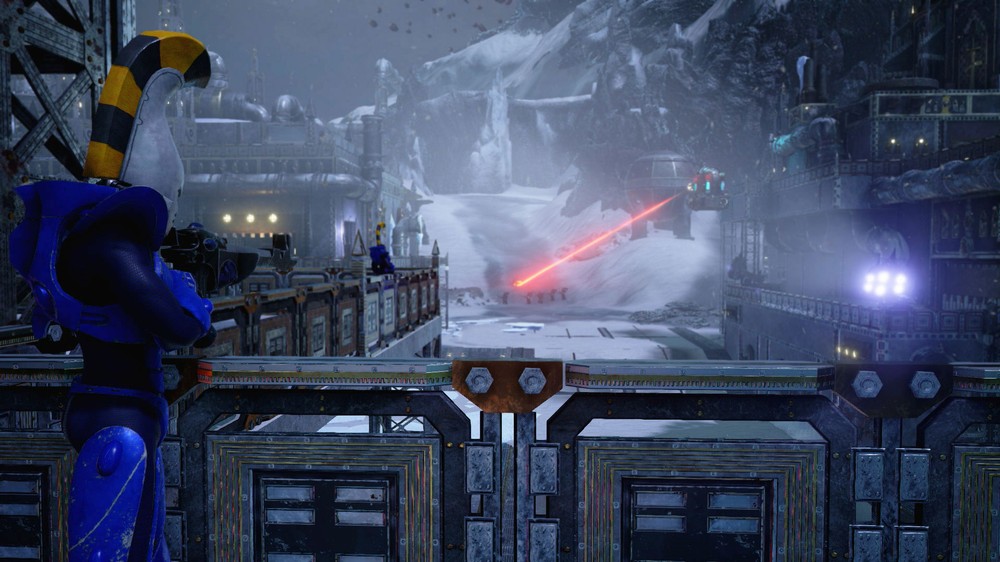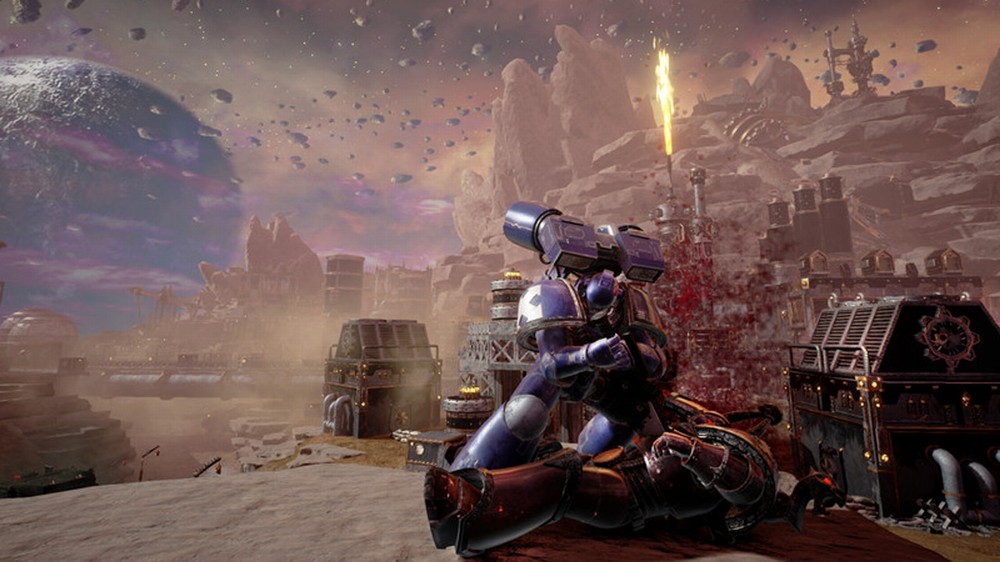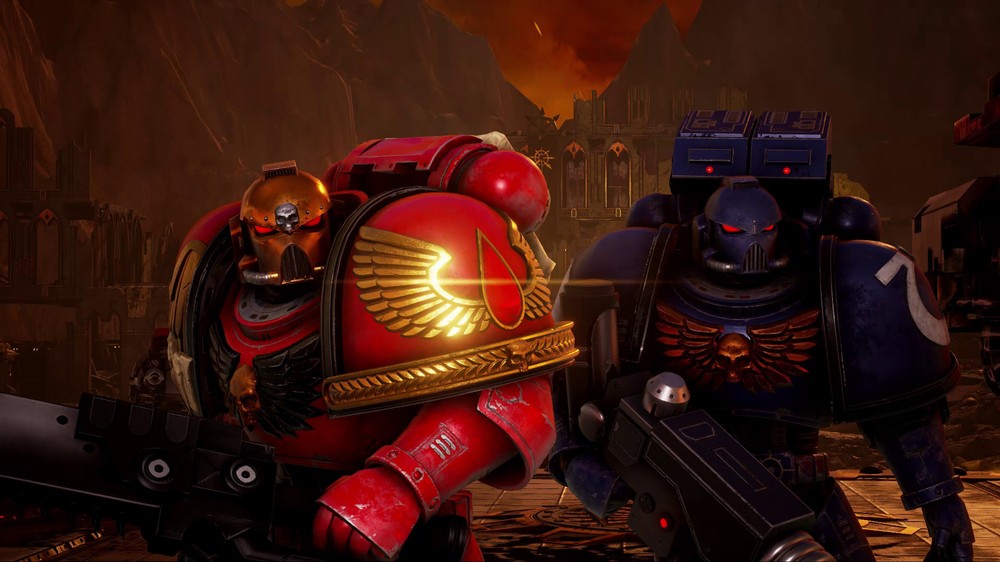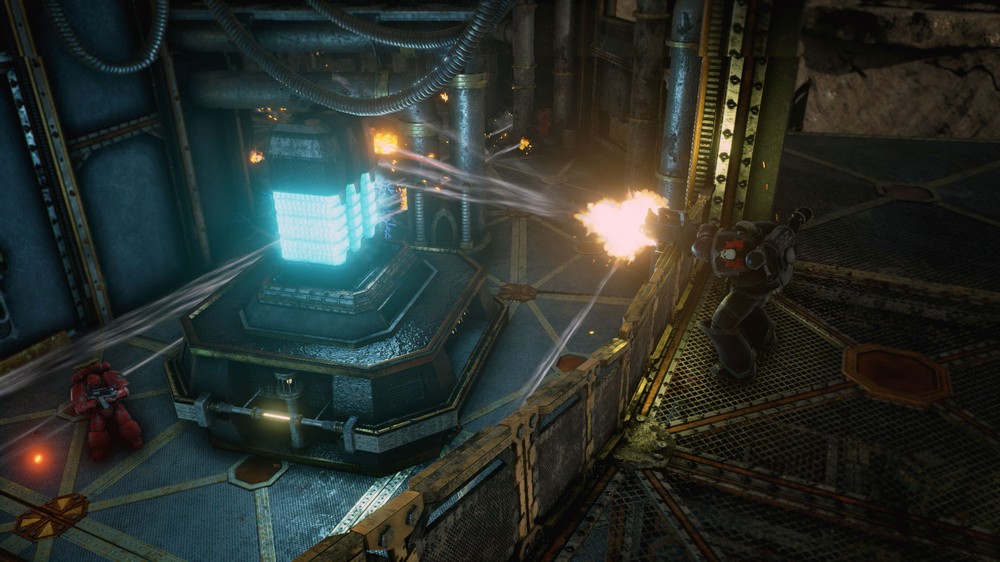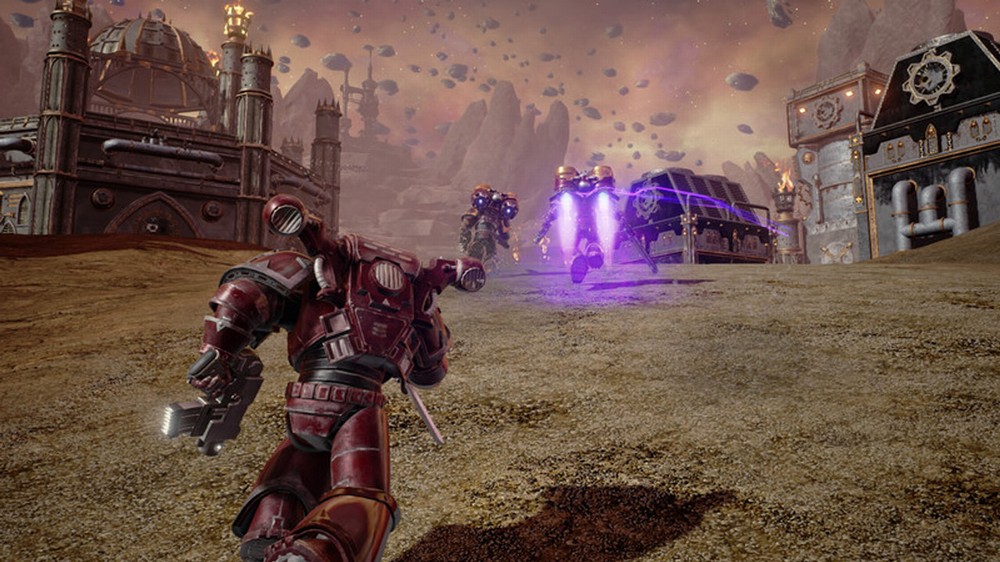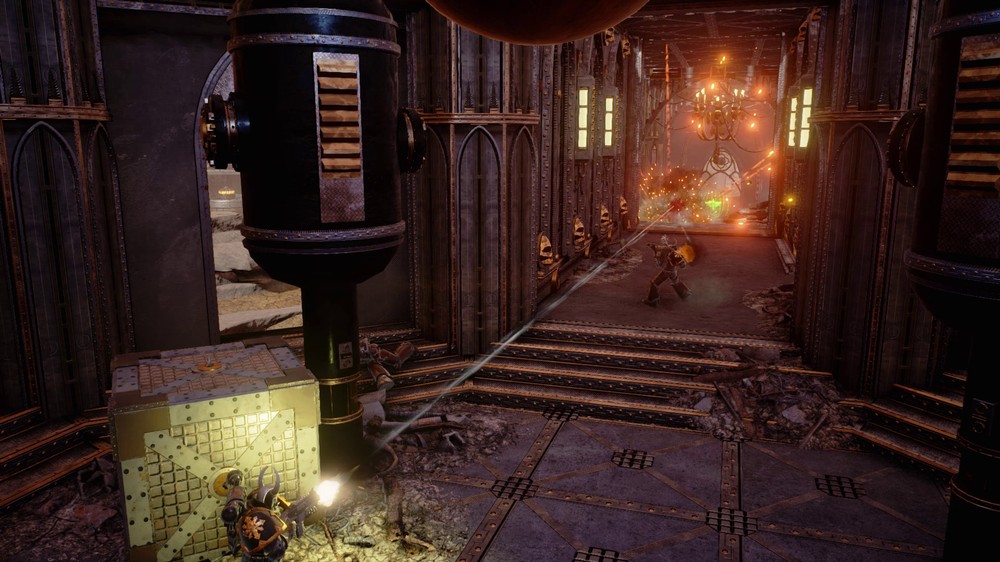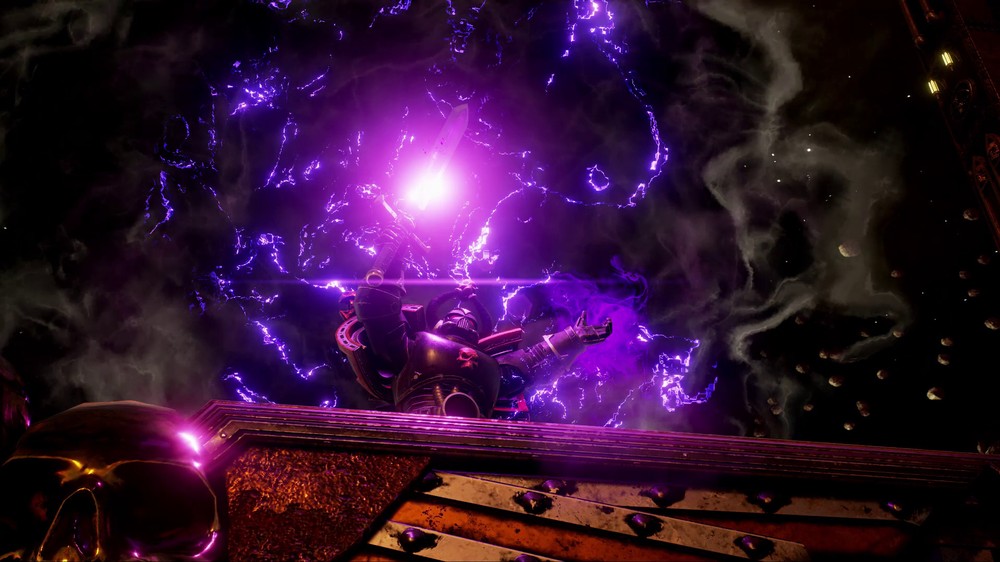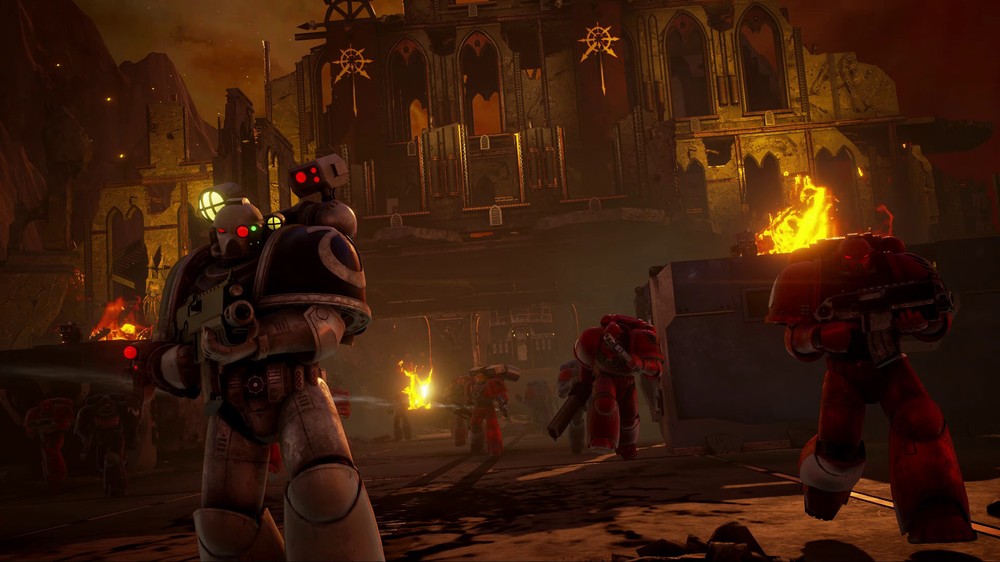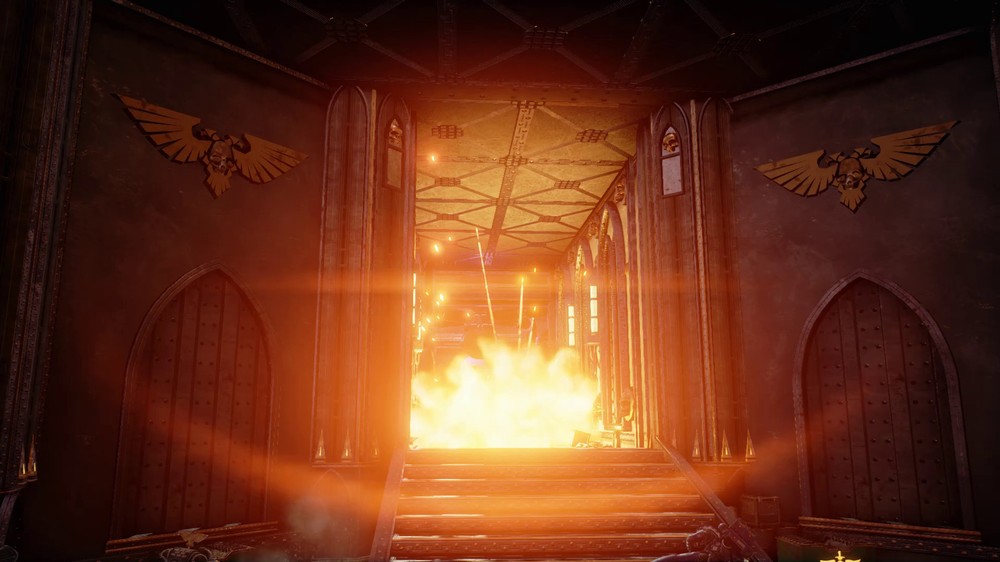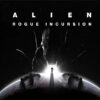I know just enough about the universe of Warhammer 40k to be dangerous. I know that it is all about the chaos of war. I know that there are men and beasts locked in endless struggle, waging war across the galaxy, eviscerating each other with chainswords and bolters.
It seems like there have been a lot of Warhammer-themed games that have come out in the recent past. Warhammer 40,000: Eternal Crusade, however, seems to be one that most closely resembles the world of Warhammer that I know from my own personal experience. If there is one thing that this game gets right, it is the essence of Warhammer. I feel like the focus on representing all the various factions and sub-groups within each should be applauded by the developers of this game. Not only do you get to choose which of the four major factions you would like to fight for (Space Marines, Chaos Marines, Eldar, Orks), but you then also get to select which of five sub-groups you want to represent, each with their own unique look. There is also quite an extensive tech-tree that allows you to develop your fighting strengths around your own play style as you progress within the game.
Usually with systems such as this, I get frustrated and overwhelmed, thinking that I am going to be completely outmatched with my noob gear, but the starter loadouts that the game provides are sufficient to perform decently in combat until you rank up high enough and learn the game well enough to decide where you really want to spend your points in order to become even more lethal in combat. It’s less about making it so you can survive and more about enhancing your effectiveness, which is a much better way to approach a progression system, in my opinion.
When you’re dealing with massive groups of players, I understand that sacrifices must be made in order to maximize performance. The game looks good. It actually reflects the stylings and feel of the miniatures that I grew up watching people play with at gaming conventions. Up close, some of the models look a little flat or under-textured, but when you understand that each texture might come with a price to performance, especially in a battle involving fifty or more other players, I am willing to accept the look of the game as it is. Adding more grit and polish might be good for screenshots, but not necessarily for gameplay.
Where this game falters, and falters hard, is in its net code. While experiencing vast, chaotic, visceral combat involving as many as fifty to sixty other players at the same time, there are moments, especially during the most intense portions of the bigger battles, where the other player characters will jump around erratically, due to the insufficient net code. This problem is exacerbated by the fact that these issues are most noticeable during melee combat and when targets are moving very quickly. An enemy will rocket boost in a certain trajectory, and you may try and track them with your aim only to find that their actual trajectory was something different altogether, making them essentially disappear from your view for a moment until you can reacquire them in your sights. This makes for a very jarring and unpleasant combat experience. This is made all the more frustrating due to the fact that when the game runs smoothly and without hiccups, it is an extremely satisfying experience. The mix of truly gritty melee combat and flat-out destructive ranged weapons is enough to scratch the itch of any blood-lusted combatant in the field.
There are three different game-modes in the game presently. There is a mode that pits a team of five versus an onslaught of AI controlled Tyranids, which are basically a large bug-like creature. They’re generally easy to kill individually but are a threat in numbers. You travel through smaller corridors, fending off these creatures, and capture control points in order to complete your mission. There is also a Skirmish mode, which is a smaller scale PvP battle that places two teams against each other to try and gain control over three objectives and hold them until you reach a certain victory threshold. Then there are large-scale battles that consist of an attacking team and a defending team. The defending team is limited by how many respawns they have in order to defend their stronghold. The attacking team is only limited by time. These game modes are each different enough from each other to offer a variety of gameplay, however, I felt that the variety in maps was a little lacking.
As I played, I couldn’t help but draw correlations with games like Planetside 2 for what the game is trying to offer. I think that there is a subset of players that are going to be attracted to Warhammer just because it is a Warhammer game and does such a good job of capturing the Warhammer vibe. But what it gains in feel and presentation, I think it loses a bit in delivery. I think that people, like me, will get frustrated with the net code issues, unless these are addressed vigorously and fixed, because in games like Planetside 2, you can have large-scale battles without the obvious problems with stuttering of opponents and such that are very present in this game.
Still, there is something to be said for cutting down your Ork foe with your Space Marine chainsword. It just feels good. But those moments are offset by the frustrations brought on by a game whose codebase is lacking.


